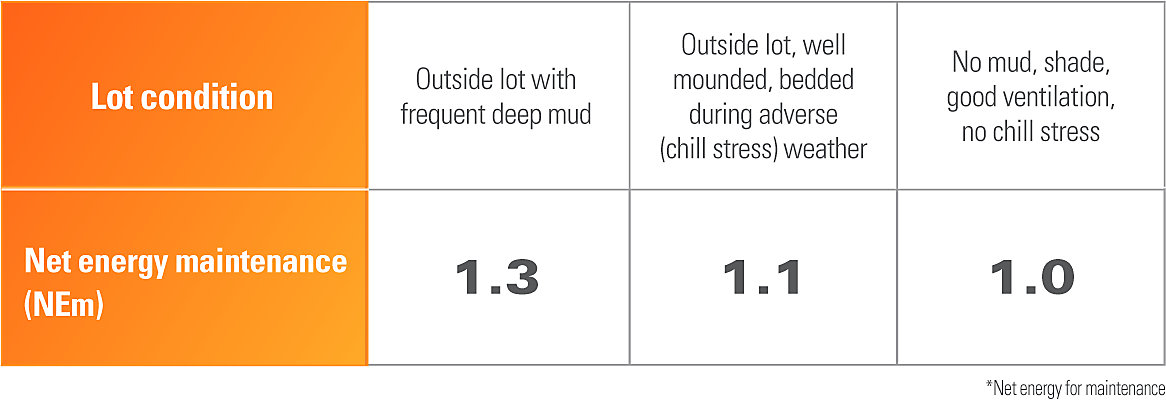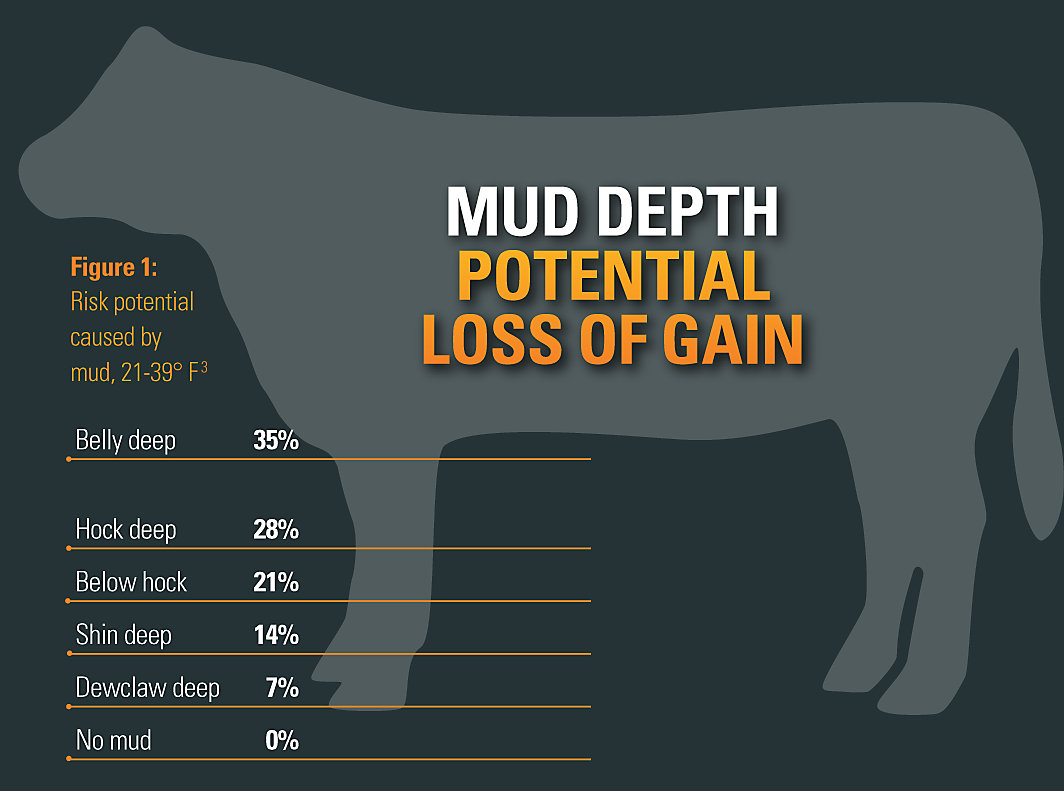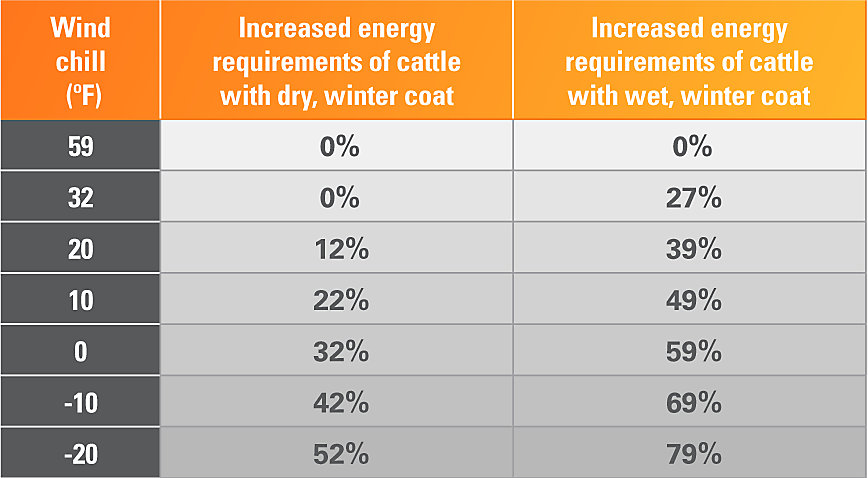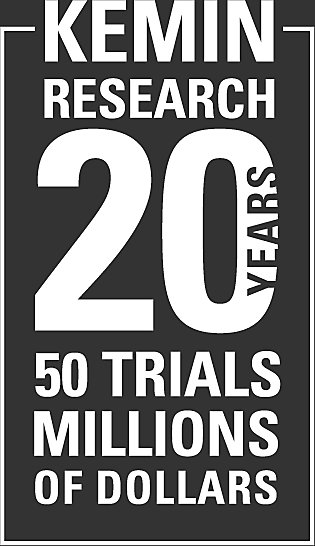During wet seasons, cattle lots can quickly become muddy, causing an increase in energy needs which can negatively impact performance and growth. The research is clear when it comes to the negative effects of muddy conditions.
You are viewing United States
- United States
- Canada
- Mexico
- South America
- EMENA
- Sub-Saharan Africa
- Russia
- South Asia
- Asia Pacific
- China
A global presence, with local expertise. Visit our regional sites:
- United States
- Canada
- Mexico
Popular Searches
How To Help Your Cattle Handle Mud Stress | Kemin USA
Mud can reduce daily gains by up to 37%1
Mud can increase the amount of feed required per point of gain by up to 33%1
Large amounts of mud (12 to 14 inches deep) can decrease feed intake by up to
30%2
Even small amounts of mud (4 to 8 inches deep) can reduce feed intake of animals by up to 15%2
The Bottom Line: Energy expenditure to compensate for the impact of mud decreases enrgy available for productive purposes, such as daily gain, immune system efficiency, reproductive function and/or protein accretion.
Increased Mud = Increased Energy Expenditure and Increased Input Costs
Cattle in areas with muddy conditions have an increased need for energy to sustain their maintenance requirements.3 The increased input costs needed to fulfill the energy requirements can have a direct hit to an operation's bottom line. The estimated effect of mud on net energy needed for maintenance requirements varies by weather conditions.

The Deeper the Mud, the Greater the Loss of Gain
A study from the University of Nebraska measured the potential loss of gains relative to the depth of mud the cattle are standing in from 21-39° F. The estimated effect of mud on cattle performance based on temperature conditions can range from 7-35%.4
Bottom line: Mud presents additional stress on beef animals, which comes at an expense of productivity

Data dive:
How Wind Chill Affects Energy Requirements
Cold, wet snow and wind alone or together can create weather stress on cattle. Mud that accompanies these stressors only increases the negative impact.5 Lower critical temperature (LCT) is the temperature below which an animal must burn extra energy to keep warm, thereby redirecting energy that should be used for maintenance, growth and performance. This table compares the percentage increase in energy required per degree Fahrenheit that the wind chill is below the animal's LCT, with either a dry, or wet winter coat.

Mud (or cold) stress abatement tip: The general rule of thumb is to increase winter ration energy by 1% for each degree Fahrenheit below the LCT.
The Benefits of Chromium on Beef Cattle Health and Immunity
Supplementing chromium can help mitigate the effects of mud and weather stress on your cattle. Chromium decreases cortisol — a stress hormone — during stressful periods,6 reducing glucose consumption by immune cells, so the immune response doesn't shift energy away from production.7

Data dive:
Chromium Impact on Performance and Morbidity
Feedlot cattle that are faced with immune challenges, such as mud stress, demand an increase in energy efficiency to prevent sickness. This energy is therefore redirected from other production factors such as daily gain. During these challenges, glucose metabolism increases, which increases chromium utilization and ultimately leads to a chromium deficiency. Research conducted at Texas Tech University suggests that supplementing the diet with chromium propionate enhances the immune response of steers to an immune challenge.8
The results?
Research shows cattle fed 300 ppb of chromium had an 11% increase in average daily gain (ADG) and a 71% decrease in the need to be treated at least once.

NOT ALL CHROMIUM IS ALIKE
KemTRACE® Chromium - the first product of its kind on the market - is a water soluble, highly bioavailable, organic source of chromium that helps stabilize insulin receptors in cattle. This improves glucose utilization for increased energy and proper cell function, resulting in better immunity.
KemTRACE Chromium is supported by more than 20 years of Kemin research and is the only U.S. Food and Drug Administration-reviewed form of chromium propionate.
See the KemTRACE Chromium mode of action at work.

Product Specifications
Ready to see how KemTRACE Chromium can improve your operation?
Start with these resources.

References
1Bond, T. E., W. N. Garrett, R. L. Givens and S. R. Morrisson. (1970). Comparative effects of mud, wind and rain on beef cattle performance. (meeting paper). American Society of Agricultural Engineers Annual Meeting.
2National Research Council. (1981). Effect of Environment on Nutrient Requirements of Domestic Animals. Washington, DC:National Academies Press.
3Shirley, R. L. and G. E. Smith. (1971). Nitrogen and Energy Nutrition of Ruminants. London:Academic Press. 112.
4Beef Feeder. (1991). A sure cure to sure footing. University of Nebraska Institute of Agriculture.
5T. Marston, et al. (1988). Beef Cow Nutrition Guide. Kansas State University.
6Mowat, D. N. (1996). Supplemental organic chromium for beef and dairy cattle. Proceedings of Asia-Pacific Lecture Tour. 31.
7Stoakes, S. K., et al. (2015). Estimating glucose requirements of an activated immune system in Holstein steers. Journal of Animal Science. 93:s3/Journal of Dairy Science. 98:s2.
8Bernhard, B. C., et al. (2012). Chromium supplementation alters the performance and health of feedlot cattle during the receiving period and enhances their metabolic response to and lipopolysaccharide (LPS) challenge. Journal of Animal Science. 90:3879-3888.
Have a Question?
If you have a question about our products or services, or just want more information, fill out the form below and someone on our team will be in contact with you.
Products
Careers
Careers
- California Residents
- California Supply Chain Act
- Email Disclaimer
- GDPR Personal Data Addendum
- General Terms & Conditions for Vendors
- Global Environmental Policy Statement
- Indirect Cost Estimates
- Kemin Terms & Conditions
- Modern Slavery Act Transparency Statement
- Privacy Policy
- Sitemap
© Kemin Industries, Inc. and its group of companies All rights reserved. ® ™ Trademarks of Kemin Industries, Inc., USA
Certain statements may not be applicable in all geographical regions. Product labeling and associated claims may differ based upon government requirements.
You are viewing United States
- United States
- Canada
- Mexico
- South America
- EMENA
- Sub-Saharan Africa
- Russia
- South Asia
- Asia Pacific
- China
A global presence, with local expertise. Visit our regional sites:
- United States
- Canada
- Mexico
Privacy Policy
By browsing this site you permit us and our partners to place identification cookies on your browser and agree to our use of cookies for marketing. Review our cookies policy for details.
Thank you for visiting Kemin.com.
Your questions and feedback are important to us. Let us know how we can help you learn more about Kemin, our products, our services or our website.
Interested in starting a career with Kemin?

%20-%20English_12.pdf/_jcr_content/renditions/cq5dam.thumbnail.319.319.png)
%20-%20English_13.pdf/_jcr_content/renditions/cq5dam.thumbnail.319.319.png)
%20-%20English_00.pdf/_jcr_content/renditions/cq5dam.thumbnail.319.319.png)
%20-%20English_00.pdf/_jcr_content/renditions/cq5dam.thumbnail.319.319.png)
